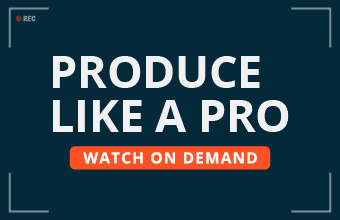In a business landscape, communication means a lot. The company’s success and growth perspectives largely hinge on the positive relationships with its stakeholders, be it customers, employees, investors, the media, or the general public. PR professionals work to build and maintain those relationships using various methods and channels.
Social media has emerged as a transformative force in the realm of public relations. Social platforms have become powerful tools for PR specialists to engage with a global audience in real time. They provide a direct line of communication to the public, enabling organizations to instantaneously share important information and gain valuable connections.
PR professionals seeking to harness the potential of social media in their campaigns will benefit from our comprehensive guide that delivers practical insights into building and executing a successful social media strategy.
1. Identify your audience
The target audience represents the specific demographic, psychographic, and behavioral characteristics of the individuals or groups that an organization aims to reach and engage.
To define the target audience, PR specialists must conduct thorough market research, analyzing factors such as age, gender, location, interests, preferences, and purchasing behavior. Additionally, understanding the challenges, pain points, and aspirations of the target audience helps in crafting messages that resonate on a deeper level.
Creating detailed buyer personas can be a valuable tool in this process. These personas are fictional, yet data-driven representations of the ideal customers or stakeholders. They serve as a reference point for tailoring messages and content to meet the specific needs and preferences of the audience.
2. Pick the right platform
Not all social platforms are created equal, and each has its unique user demographics, functionalities, and content formats. It is crucial for PR practitioners to strategically select the platforms that align with the characteristics of their target audience.
For example, platforms like Facebook and Instagram tend to have a broader and varied user base, while LinkedIn caters more to professionals and B2B interactions. Twitter is known for real-time updates and quick engagement, while platforms like Pinterest and TikTok are visual-centric and appeal to specific niches.
3. Set clear goals and objectives
No strategy will be a success without setting clear and measurable goals that serve as the guiding benchmarks against which you can assess the effectiveness of the PR efforts.
Depending on your current promotion needs and your brand’s position on the market, examples of goals in social media PR include:
- Increased audience engagement;
- Brand awareness;
- Lead generation;
- Website traffic;
- Community growth;
- Customer retention.
Key performance indicators (KPIs) such as engagement rates, reach and impressions, click-through rates, conversion and churn rates, and cost of acquisition will serve as tangible data for you to evaluate the progress and check whether the set goals have been met.
4. Create compelling content
Content is at the core of social media promotions. Compelling content that captivates and resonates with the target audience not only grabs attention but also provides value, fosters engagement, and reinforces the organization’s messaging.
- Understanding audience needs: Begin by identifying the pain points and interests of the target audience. Tailor content to address these needs and offer solutions.
- Storytelling: Engage the audience with narratives that connect emotionally. Stories have the power to humanize the organization and create a lasting impact.
- Authenticity and transparency: Authenticity builds trust. Share genuine stories, behind-the-scenes glimpses, and honest updates. Avoid over-polished or overly promotional content.
- Varied content formats: Diversify formats to cater to different preferences. This can include blog posts, infographics, videos, podcasts, and interactive elements like quizzes or polls.
- Editing and visual appeal: A well-edited image or a neatly designed infographic can grab attention more effectively than standard visuals. Utilize photo editing tools like white background remover to make your content pop in a crowded social media space.
- Consistency: Maintain a regular posting schedule to keep the audience engaged and accustomed to hearing from the organization. Consistency helps in building a loyal following.
In the realm of social media, the saying “a picture is worth a thousand words” holds true. So, utilize visuals and multimedia such as interactive elements, videos, infographics, and data visualizations to convey messages and foster engagement.
Besides, leverage content created by the audience or customers. It is a powerful way to build community, establish social proof, and showcase authentic experiences.
5. Establish a posting schedule
Maintaining a consistent posting schedule is important for keeping the audience engaged and informed. It sets expectations for when and how often they can expect to hear from the organization.
- Analyzing audience activity: Understand when the target audience is most active on social media. This can vary depending on the platform and the specific industry.
- Choosing optimal posting times: Based on audience activity patterns, establish specific time slots for posting content. Tools and analytics can help in identifying the best times.
- Balancing frequency: Consider the nature of the content and the capacity of the organization. Strive for a balance between maintaining regularity and ensuring content quality.
- Using scheduling tools: Utilize social media management tools to schedule posts in advance. You’ll achieve efficient planning and ensure posts are published at the designated times.
- Adapting to platform algorithms: Familiarize yourself with the algorithms of the chosen platforms. Some platforms may favor consistent posting for better visibility.
Note that it’s essential to find the right balance in posting frequency to prevent overwhelming the audience or being overlooked due to infrequent updates. Prioritize the quality and relevance of content over sheer volume. Posting too frequently with low-quality content can lead to audience disengagement.
6. Foster engagement and build community
Engagement on social media goes beyond just broadcasting messages. It involves actively participating in conversations and building a two-way communication channel with the audience.
- Prompt responses: Timeliness is key. Respond to comments and messages in a timely manner to demonstrate attentiveness and respect for the audience.
- Personalization: Address users by their names, if possible. Personalized responses create a more intimate and meaningful connection.
- Acknowledging feedback: Whether it’s positive or negative, acknowledge and address feedback. Thanking users for positive comments or addressing concerns shows a commitment to listening and improving.
- Offering value in responses: Provide informative, helpful, or relevant responses. This shows that the organization invests in providing value to its audience.
- Handling negative feedback professionally: When faced with criticism or negative feedback, maintain a professional and constructive tone. Address concerns, offer solutions, and show a willingness to learn and improve.
Engaging with followers is a proactive way to build a loyal and invested community around the brand. Don’t wait for the audience to always take the first step. Initiate conversations by asking questions, seeking opinions, or encouraging discussions.
7. Monitor and analyze performance
Effective monitoring and analysis of social media performance are essential for optimizing PR efforts and understanding the impact of the organization’s presence on various platforms.
- Utilize a combination of native platform analytics and third-party tools like Google Analytics, Hootsuite, or Sprout Social to gain valuable insights into audience behavior and engagement;
- Customize dashboards to focus on key performance indicators (KPIs) that align with the organization’s objectives to ensure that the most relevant data is readily accessible;
- Integrate social media analytics with Customer Relationship Management (CRM) systems to track how social interactions translate into leads, conversions, or sales;
- Set up automated reporting to receive regular updates on performance metrics to streamline the process and ensure that stakeholders are consistently informed;
- Use analytics tools to track the performance of competitors on social media to understand the industry benchmarks and identify areas for improvement.
Analyzing data enables PR professionals to make informed adjustments to the social media strategy, optimizing performance and achieving better results.
8. Keep an eye on social media trends
Staying at the forefront of social media trends is vital for maintaining effective and impactful promotion strategies in a rapidly evolving digital landscape.
- Follow industry news and updates: Actively participate in industry forums, webinars, conferences, and online communities. Identify and follow thought leaders, influencers, and experts in the PR and social media space. Regularly read industry-specific blogs, newsletters, and publications.
- Adapt to algorithm changes: Regularly study and familiarize yourself with the algorithms of the major social media platforms that affect the visibility and reach of content. Look into how paid promotions interact with platform algorithms to boost visibility.
- Embrace new platforms and features: Everything moves forward. For example, today, you can already get a visa to different countries online through VisaFly.com or participate in an auction, the results of which will be known to your children in 100 years. In PR, everything is developing at lightning speed. Staying ahead of the curve means being open to exploring new platforms and features that have the potential to impact PR efforts positively. And being an early adopter can provide a competitive advantage in terms of audience reach and engagement.
Examples of successful PR campaigns on social media
Let’s consider a few real-life examples of successful promotional campaigns on social media that leverage creativity, timeliness, inclusivity, and a strong brand message to connect with their target audience. They not only achieved their immediate objectives but also left a lasting impact on public perception and brand reputation.
-
Dove
Dove released a series of videos and images featuring women of different shapes, sizes, and backgrounds, emphasizing the idea that all women are beautiful. Aimed at challenging conventional beauty standards and promoting body positivity, the campaign went viral, generating millions of views and shares. It received praise for its empowering message and helped redefine the industry standards and approaches.
-
Oreo
During the Super Bowl back in 2013, when the lights went out, Oreo quickly tweeted an image of an Oreo cookie in the dark with the caption, “You can still dunk in the dark.” The tweet garnered widespread attention, going viral and receiving praise for its timeliness and creativity. It showcased Oreo as a brand that was quick on its feet and able to capitalize on current events.
-
Airbnb
Airbnb launched a campaign featuring a video and a website section called “We Accept,” highlighting their commitment to inclusivity and providing a platform for all users regardless of race, gender, sexual orientation, etc. It received positive feedback for addressing a critical issue in the sharing economy. It also led to Airbnb implementing new policies and tools to combat discrimination on their platform.
-
Burger King
The company offered customers the chance to buy a Whopper for just one cent, but only if they placed the order through the Burger King app while they were within 600 feet of a McDonald’s restaurant. The campaign was highly successful in driving app downloads and foot traffic to Burger King locations. It showcased creativity and a sense of humor, which resonated with the target audience.
To conclude
It’s imperative for PR professionals to take action and implement a well-crafted social media strategy. By doing so, they can unlock the full potential of these platforms to engage with their audience, amplify their brand message, and manage their reputation effectively. The benefits of a thoughtfully designed social media strategy extend beyond just visibility. They can nurture deeper connections and enhance the overall impact of PR efforts.








